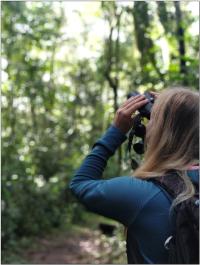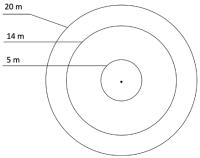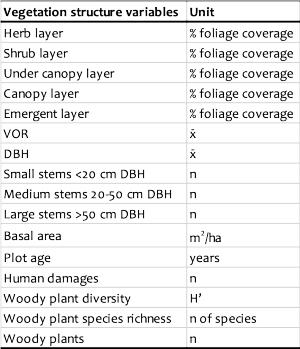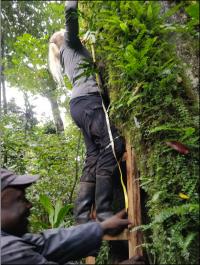Methods
The data collection was divided into two parts; the bird surveys and the vegetation surveys. Both were conducted during the same time period, between October and November 2019.
Bird surveys

The bird surveys were conducted using a point count method. Surveys of 10 minutes duration per plot were carried out during the first hours after sunrise (7.00-11.00 am) when birds are most active. The sampling of birds began 3 minutes after reaching the plot to allow the birds a chance to settle if startled by our movements. All birds, seen or heard, were noted. Birds flying over the plot were excluded. Multiple individuals of one species were noted if they could be heard from different directions simultaneously.
All bird species were divided into different habitat- and feeding guilds. Birds were classified as forest specialists, forest generalists, or forest visitors, according to their dependence on undisturbed forest structures. Forest specialists are species that typically live and breed in the forest interior and that are the most likely to disappear due to heavy disturbance. Forest generalists may also occur in the forest interior of undisturbed forests but are also able to exist at the forest edge, sometimes in even greater numbers than in the forest interior, and in disturbed forest areas. However, forest generalists depend on undisturbed forests for nesting sites. Forest visitors sometimes occur in forests but are more common in other habitats. They do not depend on undisturbed forests and their presence in a forest may sometimes even be an indication of forest disturbance.
The birds were also divided into five different feeding guilds; invertivores, frugivores/nectarivores, omnivores, herbivores/granivores, and vertivores/scavengers.
Vegetation surveys

Vegetation structures were mapped in plots divided into three subplots; a small subplot (5 m radius – 78.5 m2), an intermediate subplot (14 m radius – 615.4 m2), and a large subplot (20 m radius – 1256 m2).
The vegetation structure variables (collected, estimated, or calculated data) are compiled in the table below.


All woody plants were measured within the small subplot, woody plants with stem diameters > 20 cm were measured in the intermediate subplot and only woody plants with a stem diameter > 50 cm were measured in the large subplot. Woody plants with a DBH (diameter at breast height) less than 5 cm were noted as 2,5 cm. Foliage coverage of the vertical structural layers was estimated within the intermediate subplot (within 14 m radius from the plot center). Human damages were noted in all subplots. The human damages consisted of; i) stumps of woody plants, ii) cut branches, iii) cuts in stems (of living woody plants), and iv) charcoal burning sites.
Responsible for this page:
Director of undergraduate studies Biology
Last updated:
06/07/20
